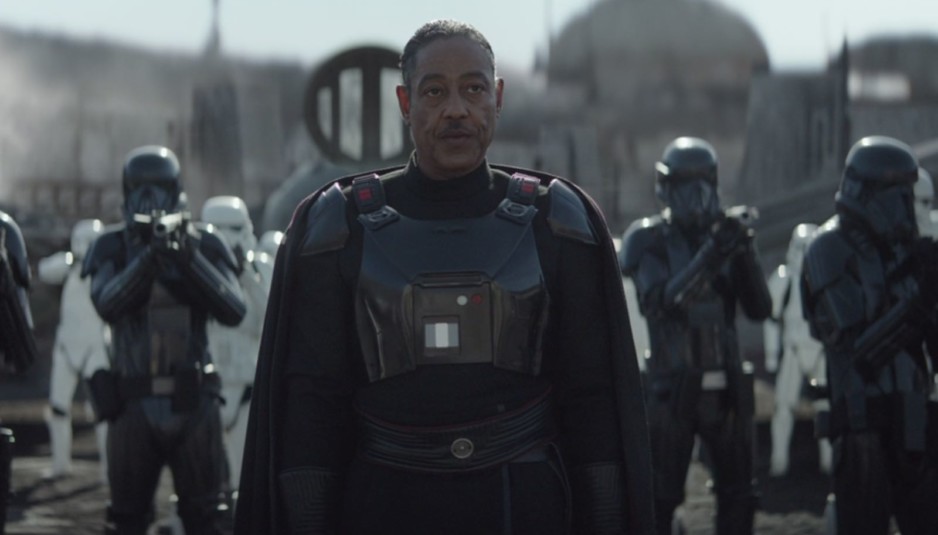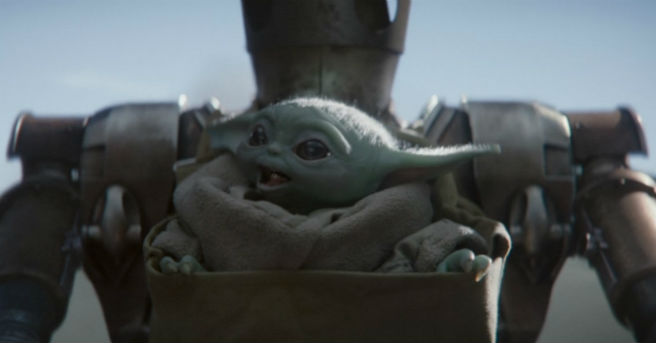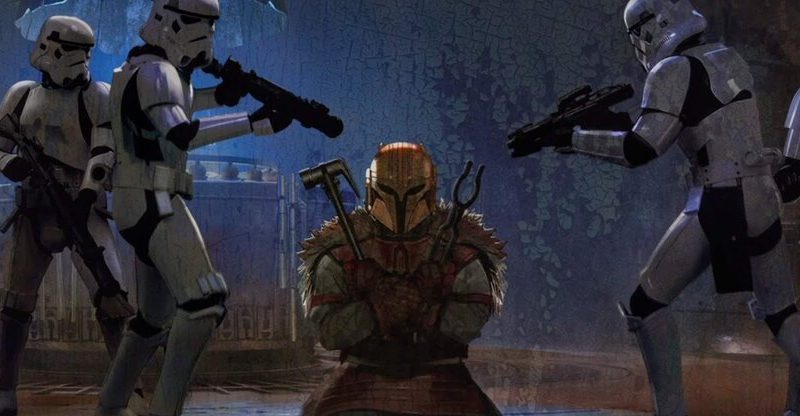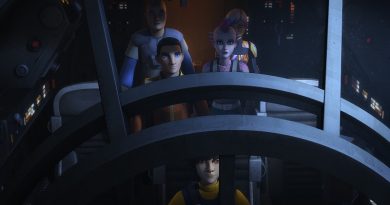Star Wars The Mandalorian – The Reckoning and Redemption Review

“The Reckoning” and “Redemption” represent the finale of The Mandalorian’s freshman season, which has been a resounding success, not just for Disney+, but for the Star Wars franchise. The Mandalorian managed to avoid the divisive reception that many of the recent live action films have garnered and gave birth to numerous memes based mostly around the insanely popular ‘The Child’ a.k.a., Baby Yoda. It’s only fitting that the season returned to the dusty town where it all began with said infant Yoda to wrap everything up; a finale it pulled off with ease.
The first part of this finale, “The Reckoning,” begins with the Mandalorian being lured back by Carl Weathers’ Greef Karga on the promise of removing the threat of constant bounty hunters in exchange for helping to eliminate the lingering Imperial presence. Being free of constant pursuit is too irresistible for the Mandalorian to pass up, but on the way back, he lures Gina Carano’s Cara Dune to his side with a promise of removing some of the white helmeted galactic leftovers from the world of the living. Rounding out the team is the proud Ugnaught Kuiil, who has found the remains of IG-11 (voiced by “Redemption” episode director Taika Waititi). Kuiil has repaired and reprogrammed the former droid bounty hunter to be a caregiver and nurturer, and convinces the Mandalorian to allow IG-11 to come along despite his misgivings about droids.
The first part of the journey involves joining up with Greef well outside of town and traveling in to avoid raising suspicions. It’s a two day trip complete with your typical Western moment around a campfire, that is, until the decidedly untypical Western attack by flying lizards that carry off a couple of Greef’s men and leaves the head of the bounty hunter guild wounded and infected with poison. It’s at this moment that one can understand why the powers that be opted to move “The Reckoning,” up a few days to air before The Rise of Skywalker, as Greef is saved by Baby Yoda Force healing him. Arguably, this Force technique has been around since Obi-Wan Kenobi knelt over a prone Luke Skywalker and revived him, but it was definitely a quick refresher intended to make Rey’s, and Ben Solo’s use of the technique familiar to film goers. Baby Yoda’s own healing ability was foreshadowed in “The Child,” when he kept trying to heal the Mandalorian after his brush with Trandoshans.

The morning after Greef’s salvation finds our band confronting the Client, once again bringing Werner Herzog and his Baby Yoda obsessed Imperial to the screen. Unfortunately for the Client, and for fans of Herzog, his screen time is cut short by the introduction of the true power in charge of the Imperial forces, Moff Gideon. Accompanied by stormtroopers who look like they actually cleaned their armor, as well an assortment of Death troopers, and the moff arrives in style in his own TIE Fighter. From seemingly nowhere, the Mandalorian and friends suddenly find themselves trapped inside a building after Gideon orders the place barraged with blaster shots, one of which removes the Client from the mortal coils of existence. Panicked for the safety of Baby Yoda left in the care of Kuiil outside of town, the Mandalorian radios the Ugnaught to flee back to the Razor Crest, unfortunately tipping off the Imperials to the child’s location. A heart pounding filled moment of The Mandalorian passes, and Kuiil falls just short of sanctuary and Imperial scout troopers scoop up the child and head back to town on speeder bikes. It’s on this note “The Reckoning” passes the baton on to “Redemption.”
The title of the ultimate episode is actually a little difficult to place with regard to happens. Redemption indicates an act by someone or something to make right a former wrong. There are a couple choices, perhaps surprisingly, IG-11, who becomes a hero who rescues Baby Yoda, the target he formerly intended to kill. Or more likely, given his role as the protagonist of the show, the Mandalorian, paying back a debt to his people, who suffered terribly after they came to his aid to help the child. That payback takes on the task of finding the people of the Baby Yoda, notably, not necessarily his own species, but Force users, the Jedi (which may be a little hard in the post Order 66 era). But returning to “Redemption,” much of it is spent with Moff Gideon closing a proverbial fist on our heroes, who he has outnumbered and cornered. It’s only the arrival of IG-11, after rescuing the child from a comedic pairing of scout troopers, who sets things in motion for the team to escape into the city’s lava sewers.

Prior to the escape to the sewers, we are provided a little exposition by Gideon and the Mandalorian. From Gideon, who identifies Cara Dune as Carasynthia Dune of Alderaan, we learn some insight into the former rebel’s willingness to tangle with Imperials, as well naming the Mandalorian, Dyn Jarren. It’s this knowledge that allows the Mandalorian to help identify Gideon, a former ISB officer who was heavily involved in the Purge of Mandalore. This and a surprise at the end of the episode, implies we will get more information on what happened to the militant people who rebelled against the Empire in the time around the Galactic Civil War. Then IG-11 appears bringing hell and Baby Yoda with him.
The droid manages to reach the cornered heroes, cut a hole to the sewers, and also saves the Mandalorian’s life after he received a nasty head wound. Viewers also got two things, a loophole in The Way, and Pedro Pascal’s face, albeit sweaty and ailing. Thanks to an upgrade from the dearly departed Kuiil, IG-11 has medical droid abilities and after pointing out to the Mandalorian that he is not a living thing, and thus, it’s okay to remove his helm, the droid is able to fix the hole in the back of Dyn’s head. It’s poignant, not only because the Mandalorian has removed his helmet, but because the first season went out of its way to present the Mandalorian’s hatred for droids which went back to the moment he was orphaned in a Separatist droid army attack during the Clone Wars. The flashback that came with the moment laid everything together, the droid killers, as well the Mandalorians who rescued him. It’s at this moment that the Mandalorian is allowed to reconsider his perspective, not only just on droids, but also on anyone who acts within a specific code of instructions. We’ll have to wait until Season Two to see how the experience truly affects Dyn, but it’s easily one of the most emotional moments of the nascent show.
In the sewers, the crew makes a detour to the Mandalorian covert, finding a disturbingly large pile of discarded Mandalorian armor, from the fallen, and the Armorer quietly reclaiming their beskar steel for future Mandalorians. It’s Emily Swallow’s Armorer who instructs the Mandalorian on his next mission (the act of redemption?) and also assigns him the mud horn as his signet, now that baby Yoda is firmly on team Mandalore. She hands the Mandalorian a jet pack and then later, several cans of galactic whoop ass to the poor stormtroopers sent to take her out. A short trip down one of the town’s lava streams and IG-11 sacrifices himself to take out a couple squads of stormtroopers waiting to ambush the team as they near the end of the ride. With escape in sight, we, the viewers, and the heroes, hear that familiar TIE Fighter scream heralding the arrival of Moff Gideo.
Using his new jetpack, the Mandalorian climbs a column of smoke and flame into the sky to intercept the starfighter. A grappling hook and planted explosive later, and it seems Gideon is done for, his TIE crashing into the countryside. The heroes, relieved, bid farewell and set off on their next personal missions. The episode cuts back to the crashed TIE Fighter and reveals Gideon slicing his way out of the ruined craft with a black lightsaber, or for fans of the animated series The Clone Wars and Star Wars Rebels, the Darksaber. It’s presence while cool for those unfamiliar, is shocking for those aware of its intimate relationship to Mandalorian culture and leadership. A symbol for those who lead the helmeted forces, it was last seen in the hands of Bo-Katan, the leader of the Mandalorian resistance to Imperial domination. That an Imperial Moff now has it again bodes ill news for what happened to the Mandalorians.
“The Reckoning,” and “Redemption” together represent a fine season capper for The Mandalorian. Not only did it offer wonderful moments and insights to our existing characters, but it introduced Giancarlo Esposito’s Gideon, who will likely return in a larger role next season. Even better, it proved that not only could Star Wars succeed as a live-action show, it could do so to wild approval. Given that the franchise began as something based on science fiction serials, it’s something of a homecoming, and gives hope to the other live action shows currently under production (Cassian and Kenobi). The show also provided the opportunity for the franchise to turn to a more inclusive and diverse directing pool, highlighting the talents of Deborah Chow, Rick Famuwiya, Bryce Dallas Howard, and Taika Waititi. Already one of them, Chow, has been tapped to film even more Star Wars. “The Reckoning” and “Redemption represent a wonderful ending, and an even better beginning for what’s to come.
- Star Wars The Mandalorian – The Reckoning and Redemption Review - January 15, 2020
- Star Wars: The Mandalorian –The Prisoner Review - January 11, 2020
- Star Wars Resistance – Station to Station Review - January 7, 2020











